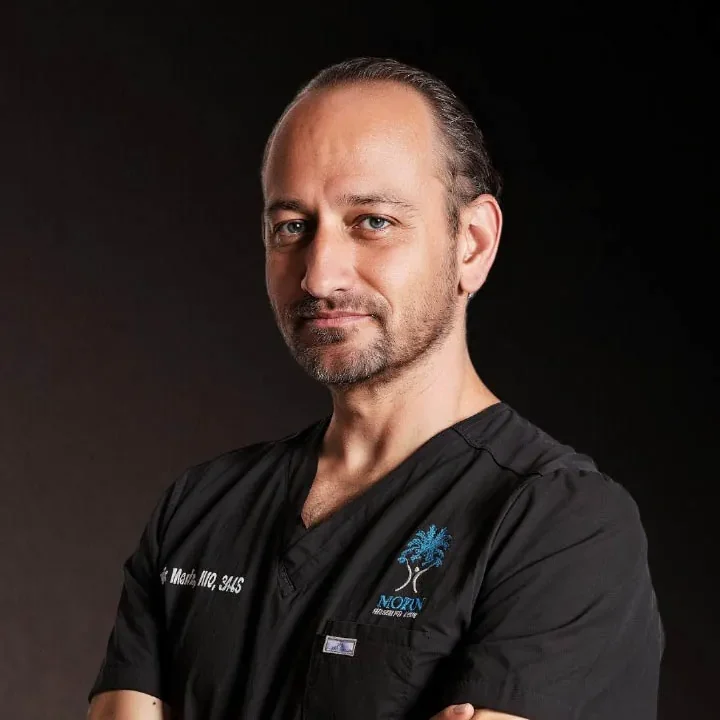Table of Contents
- Unraveling the Mystery of Gynecomastia in Adolescents
- The Prevalence and Causes of Gynecomastia
- Pubertal Gynecomastia (PG): A Closer Look
- Risk Factors for Developing Gynecomastia
- Recognizing Symptoms and When to Seek Medical Help
- Managing Male Mammary Maladies through Surgical Management
- FAQs in Relation to Gynecomastia in Adolescents: Exploring Causes and Solutions
- Conclusion
Gynecomastia in Adolescents: Exploring Causes and Solutions is a journey many parents, caregivers, and teens embark on unexpectedly.
The reality? Understanding this condition that leads to enlarged breast tissue in boys due to hormonal imbalances is an uphill battle. Grasping the root causes of Gynecomastia can feel like navigating a maze without a map. But here’s the deal – you’re not alone in this quest.
In fact, Gynecomastia in Adolescents: Exploring Causes and Solutions is more common than most realize, affecting up to 65% of mid-adolescent males, according to some studies.
Table of Contents:
- Unraveling the Mystery of Gynecomastia in Adolescents
- The Prevalence and Causes of Gynecomastia
- Pubertal Gynecomastia (PG): A Closer Look
- Risk Factors for Developing Gynecomastia
- Recognizing Symptoms and When to Seek Medical Help
- Managing Male Mammary Maladies through Surgical Management
- FAQs in Relation to Gynecomastia in Adolescents: Exploring Causes and Solutions
- Conclusion
Unraveling the Mystery of Gynecomastia in Adolescents
Gynecomastia is an intriguing medical condition characterized by enlarged male breast tissue.
This increase in breast gland tissue among boys or men isn’t exclusive to one gender; it can affect both breasts unevenly due to hormone imbalances. Estrogen controls sex characteristics, and complications arise when males’ exclusively female hormone levels remain high.
The key players here are hormones – testosterone and estrogen. The delicate balance between these two is crucial for maintaining normality within the male reproductive system. When there’s a shift with more weak estrogenic activity than needed, swollen breast tissue starts developing, leading to gynecomastia.
Interestingly enough, most adult men experiencing this phenomenon report no symptoms at all. While some may experience tenderness or nipple discharge as their body adjusts to these changes. This comprehensive understanding paves the way for our next topic: The prevalence and causes of gynecomastia. Stay tuned.
The Prevalence and Causes of Gynecomastia
Let’s explore the realm of gynecomastia.
This condition, characterized by enlarged male breast tissue, is more common than you think.
In fact, between 24% to 65% of men aged 50-80 experience this phenomenon, according to Mayo Clinic Research.
The Role of Medications and Recreational Drugs
Now let’s talk about causes.
You see, several factors can lead to an increase in breast gland tissue among males. For example, certain HIV medications or even recreational drugs like alcohol could be culprits here.
Health Conditions Contributing to Gynecomastia in Adolescents
Moving on from substances we ingest that may cause hormone levels imbalance leading to swollen breast tissues… We find ourselves looking at health conditions such as hypogonadism and tumors which also play a significant role.
Liver failure patients undergoing dialysis often experience gynecomastia due primarily to hormonal imbalances associated with their treatment.
Pubertal Gynecomastia (PG): A Closer Look
Let’s delve into pubertal gynecomastia, commonly known as PG. This condition typically emerges around age 13-14 or during Tanner stages 3 and 4 of adolescent development.
It is important to note that over 95% of all PG cases are idiopathic. In simpler terms, they’re considered physiological with no identifiable cause.
The Lesser Known Pathological Causes
Around less than five percent stem from pathological causes.
The human body is an intricate system governed by hormones, among other factors.
In most boys going through puberty, there’s a natural ebb and flow to these hormone levels, which can lead to temporary enlargement in male breast tissue. However, when this hormonal balance gets disrupted due to external influences such as medications or underlying health conditions like Klinefelter syndrome complications leading to gynecomastia – it results in persistently enlarged breasts.
It might seem surprising, but a genetic condition affecting males often leads to higher estrogen levels than testosterone, causing glandular tissue growth beyond normal limits, thus resulting in gynecomastia.
Understanding these complexities helps us better manage male mammary maladies including gynecomastia. So what happens next? Stay tuned for our deep dive into risk factors associated with developing this intriguing yet misunderstood medical phenomenon.
Risk Factors for Developing Gynecomastia
Let’s explore the potential causes of gynecomastia.
Adolescence:
This is a critical period when hormone levels fluctuate significantly, increasing the chances of developing enlarged breasts in males.
Klinefelter Syndrome:
Klinefelter Syndrome, a genetic condition affecting male estrogen levels, often leads to complications such as gynecomastia due to its impact on hormonal balance.
Elevated Estrogen Levels:
Estrogen controls female traits, but it isn’t exclusively a female hormone; men produce it too. However, if male estrogen levels remain high over time, this could result in swollen breast tissue development – one key symptom of gynecomastia.
Now you understand some common risks associated with developing this condition during adolescence and older age.
Remember though – knowledge empowers. By understanding these triggers we are better equipped at managing our health proactively.
Recognizing Symptoms and When to Seek Medical Help
If you’ve noticed a change in your chest, it’s crucial not to ignore these signs.
Gynecomastia presents itself through certain symptoms like pain or swollen breast tissue. You may also experience breast tenderness or nipple sensitivity – all enlarged male breast tissue indicators. Healthline offers more insight into this condition.
The Importance of Timely Intervention
Catching the early signs can make managing male mammary maladies easier.
Beyond physical changes, gynecomastia could lead to psychological distress due to altered body image. This makes seeking help from departments dealing with enlarged breast issues even more critical for overall well-being. (source)
Hormonal Imbalances: A Key Factor
An imbalance between testosterone and estrogen levels is often at play here.
While estrogen controls female traits primarily, men produce it, too, in smaller amounts. However, when male estrogen levels remain high over time, they stimulate growth leading to an increase in the size of the glandular tissue within their breasts.
Now that we know what triggers such conditions let’s explore potential solutions. We’ll delve deeper into how surgical management addresses these challenges effectively.
Managing Male Mammary Maladies through Surgical Management
Gynecomastia, or enlarged breasts in men, can be a distressing condition. We’re here to explore surgical treatment options for managing male mammary maladies.
The Goal of Surgery
Surgical management aims at reducing glandular tissue. This relieves physical discomforts associated with enlarged breasts due to hormonal imbalances.
Understanding Weak Estrogenic Activity Impact
You might wonder how estrogen impacts the male reproductive system.
Importance Of Hormone Levels Monitoring
Changes in hormone concentrations during the teenage years and later life can heighten the probability of gynecomasti. Regular monitoring is essential. Healthline provides more insights into how hormonal imbalances affect the male reproductive system, leading to enlarged breasts.
Role Of Diet And Exercise In Maintaining Balanced Hormone Levels
Maintaining a balanced diet and regular exercise helps control sex characteristics by keeping estrogen under check. This prevents the enlargement of breast gland tissue. The National Institutes of Health explains how physical activity impacts hormone levels positively.
Addressing the Psychological Impact Of Enlarged Breasts On Men
Gynecomastia isn’t just about physical discomfort; it also has psychological implications that cannot be ignored. If needed, seek professional help or join support groups with shared experiences. A great way to learn from others facing similar challenges is the Gynecomastia Support Group.
FAQs in Relation to Gynecomastia in Adolescents: Exploring Causes and Solutions
What causes gynecomastia in adolescence?
Hormonal changes primarily cause adolescent gynecomastia during puberty. An imbalance between estrogen and testosterone levels can lead to the enlargement of breast tissue.
What is the root cause of gynecomastia?
The root cause of gynecomastia is typically an imbalance in hormone levels, specifically elevated estrogen or reduced testosterone. Other factors may include certain medications, health conditions, and the use of recreational drugs.
Can you get rid of adolescent gynecomastia?
Yes, adolescent gynecomastia often resolves independently as hormone levels stabilize with age. In persistent cases, medical treatments such as medication or surgery might be necessary.
How do you get rid of gynecomastia in puberty naturally?
Maintaining a healthy lifestyle, including regular exercise and a balanced diet, can help manage pubertal Gynaecostasia. However, severe cases may require medical intervention.
Conclusion
In conclusion, navigating Gynecomastia in Adolescents: Exploring Causes and Solutions provides insights into its root causes and practical solutions.
If you’re ready to take control of your life again by addressing your adolescent’s gynecomastia issues, or if you want more information about effective treatments available today, consider reaching out. Our team provides top-notch surgical procedures to treat men suffering from enlarged breasts due to hormonal imbalances.
For your complimentary appointment, call 424-279-5801 seven days a week from 8 am to 8 pm PST or complete this contact form.

Dr.Babak Moeinolmolki
LA Cosmetic Surgeon Dr. Moein is board-certified by the American Board of General Surgery.

